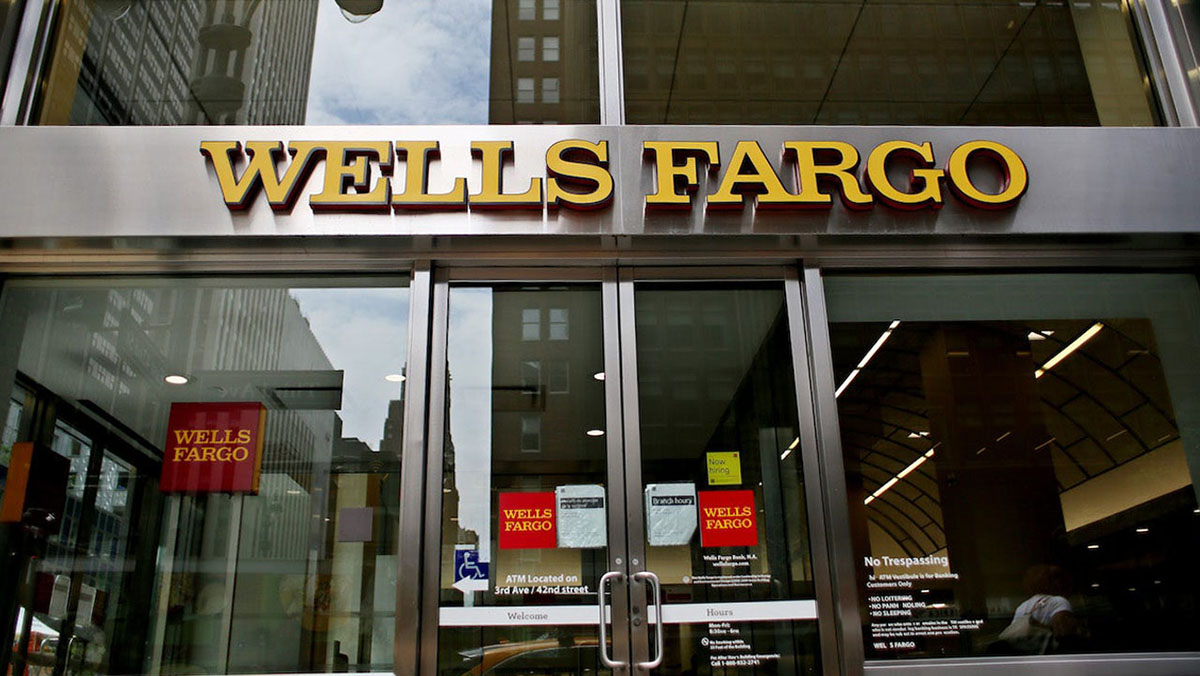

Finance
What Happens If I Close My Savings Account
Modified: December 30, 2023
Discover the consequences of closing your savings account in our comprehensive finance guide. Find out how it may impact your financial goals and strategies.
(Many of the links in this article redirect to a specific reviewed product. Your purchase of these products through affiliate links helps to generate commission for LiveWell, at no extra cost. Learn more)
Table of Contents
Introduction
Opening a savings account is an important step in managing your finances and building a secure financial future. It allows you to earn interest on your deposited funds while keeping them safe and easily accessible. However, there may come a time when you consider closing your savings account. It could be due to changing financial goals, better opportunities elsewhere, or simply a desire for a different banking experience.
While closing a savings account is a straightforward process, it’s crucial to understand the potential effects and implications of such a decision. This article aims to shed light on what happens if you choose to close your savings account.
Before proceeding, it is important to note that specific rules and regulations may vary depending on the bank or financial institution you are dealing with. It’s recommended to consult your bank directly for personalized advice tailored to your specific situation.
Now, let’s explore the possible repercussions of closing your savings account.
Understanding the repercussions of closing your savings account
Closing your savings account may have several financial and practical repercussions. It’s essential to be aware of these potential side effects before making a final decision.
Loss of interest earnings: One significant impact of closing your savings account is the loss of potential interest earnings. Savings accounts typically offer interest on the deposited funds, allowing your money to grow over time. By closing your account, you forfeit the opportunity to earn interest on those funds.
Losing a safety net: Savings accounts often serve as a safety net for unexpected expenses or emergencies. By closing your account, you eliminate this financial cushion and may be left without readily accessible funds in times of need. It’s crucial to have a plan in place to handle unexpected expenses before closing your savings account.
Impact on credit score: Although not directly related to closing a savings account, it’s worth considering the potential impact on your credit score. Savings accounts are not reported to credit bureaus, so closing your account does not have a direct effect on your credit score. However, if you have a long-standing relationship with the bank, closing your savings account may affect the overall length of your credit history, which can indirectly impact your credit score.
Affected banking relationship: Closing your savings account may disrupt your existing relationship with the bank. If you have other accounts or loans with the same institution, consider how closing your savings account may impact those relationships. It’s advisable to discuss your intentions with a bank representative to understand any potential implications.
Tax considerations: Depending on the type of savings account you have, closing it may have tax implications. For example, if you have a tax-advantaged savings account like an IRA or a Health Savings Account (HSA), closing it prematurely could lead to penalties or tax consequences. It’s essential to consult with a tax professional or financial advisor to understand the specific tax implications before closing your account.
Now that we’ve explored some potential repercussions of closing your savings account, the next section will discuss any potential fees and penalties that you may encounter.
Impact on interest earnings
One of the primary reasons people open savings accounts is to earn interest on their deposited funds. Closing your savings account will have a direct impact on your interest earnings.
When you close your savings account, you forfeit any future interest that would have been accrued on your balance. This means that you will no longer benefit from the growth of your funds through interest payments.
It’s important to note that interest is typically calculated and paid out periodically, such as monthly or quarterly. Therefore, if you decide to close your savings account in the middle of an interest period, you may still be entitled to the interest that has been accrued up to that point.
However, keep in mind that some banks have specific terms and conditions regarding the payment of accrued interest upon closing an account. It’s advisable to check with your bank to understand their policies in this regard.
If you have a significant amount of money in your savings account, the impact on interest earnings can be even more substantial. Over time, the compounding effect of interest can significantly boost the growth of your savings. Closing your account will halt this compounding growth and potentially slow down your progress towards achieving your financial goals.
Additionally, if your savings account has a higher interest rate compared to other available options, closing it means giving up on the potential for earning higher returns. Therefore, before deciding to close your account, it’s important to evaluate other investment opportunities or alternative savings accounts that may provide better interest rates.
Ultimately, the impact on your interest earnings depends on several factors, including the balance in your savings account, the interest rate offered, and the length of time you had the account open. By carefully considering these factors, you can make an informed decision about whether closing your account is the right move for your financial situation.
Next, let’s explore any potential fees and penalties that you may encounter when closing your savings account.
Potential fees and penalties
Before proceeding with closing your savings account, it’s important to be aware of any potential fees or penalties that may be associated with the process. While these fees vary from one bank to another, here are some common charges you may encounter:
Early closure fee: Some banks impose an early closure fee if you close your savings account within a certain time frame, typically within the first six months to a year of opening the account. This fee is intended to discourage customers from frequently opening and closing accounts and may range from a fixed amount to a percentage of your account balance.
Minimum balance requirement: Many savings accounts require you to maintain a minimum balance to avoid fees. If your account balance falls below the specified minimum threshold before closing, the bank may charge you a fee. It’s essential to check your account terms and conditions to understand if there are any minimum balance requirements and the associated penalties.
Service charges: Some savings accounts have monthly or annual service charges. These charges are separate from any early closure fees or minimum balance penalties. If your savings account has service charges, ensure that you settle any outstanding fees before closing the account to avoid accumulating additional expenses.
Transaction fees: Depending on the bank and savings account type, certain transaction fees may apply. If you’ve had recent transactions, such as withdrawals or transfers, make sure to account for any potential transaction fees when closing your account.
Account closure process fee: Some banks may charge a fee for the administrative tasks involved in closing your savings account. This fee covers the cost of processing your request and completing the necessary paperwork. It’s advisable to inquire about this fee before initiating the closure process.
It’s crucial to review your account terms and contact your bank directly to understand the specific fees and penalties associated with closing your savings account. This will give you a clear picture of any potential financial implications and allow you to make an informed decision.
Now that we have discussed the potential fees and penalties, let’s delve into some considerations you should take into account before closing your savings account.
Considerations before closing your savings account
Before you decide to close your savings account, there are several important considerations to take into account. Evaluating these factors will help you make an informed decision that aligns with your financial goals. Here are some key considerations:
Financial goals: Assess your current financial goals and how closing your savings account fits into them. Consider whether there are alternative ways to achieve your goals without closing your account, such as adjusting your budget or exploring different investment options.
Emergency fund: Ensure that you have an adequate emergency fund in place before closing your savings account. An emergency fund serves as a safety net for unexpected expenses and can prevent you from going into debt in times of financial hardship.
Interest rates: Compare the interest rate offered by your current savings account with other available options. If you find that your account has a relatively low interest rate, it may be worth exploring alternative savings accounts that offer higher rates. This way, you can potentially earn more on your savings without closing your account.
Banking relationship: Consider the overall relationship you have with your bank. If you have multiple accounts or loans with the same institution, closing your savings account may have an impact on those relationships. It’s important to assess how closing your account may affect your banking experience and whether it aligns with your overall financial objectives.
Future needs: Anticipate your future financial needs and how closing your savings account might impact them. If you foresee the need for a savings account in the near future, such as for upcoming expenses or specific financial goals, closing your account may not be the most prudent decision. Evaluate whether there are other ways to manage your funds while still keeping them easily accessible.
Alternative options: Consider alternative options before closing your savings account. For example, if you’re dissatisfied with the current interest rate, explore other financial institutions or account types that may better suit your needs. It’s wise to research and compare different savings accounts and their features to identify the best option for your financial situation.
By carefully weighing these considerations, you can make an informed decision about whether closing your savings account aligns with your financial goals and priorities.
Next, let’s explore some alternative options to consider before deciding to close your savings account.
Alternative options to closing your savings account
If you’re considering closing your savings account but still want to maintain your financial security and growth potential, there are alternative options to explore before making a final decision. Here are some alternatives to consider:
Switching to a different savings account: If you’re unhappy with your current savings account’s interest rate or features, consider exploring other savings account options within your current bank or at different financial institutions. Look for accounts that offer competitive interest rates, minimal fees, and additional features that align with your financial needs and goals. By switching to a different savings account, you can potentially earn more on your deposits without having to close your account.
Explore high-yield savings accounts: High-yield savings accounts are a type of savings account that generally offers a higher interest rate compared to traditional savings accounts. These accounts are often offered by online banks or credit unions and can help you maximize your interest earnings. Research different high-yield savings account options to find one that suits your needs and provides a better return on your savings.
Consider a money market account: A money market account is another alternative to a traditional savings account. These accounts typically offer higher interest rates and may have some additional flexibility in terms of accessing your funds. Money market accounts often require a higher minimum balance to open and maintain, but they can offer a competitive return on your savings.
Build a CD ladder: Consider setting up a Certificate of Deposit (CD) ladder. A CD ladder involves opening multiple CDs with varying terms and interest rates. As each CD matures, you can reinvest the funds or use them for your financial needs. This strategy can provide a higher interest rate compared to a regular savings account, while still allowing you to access your money periodically.
Invest in other financial instruments: Depending on your risk tolerance and financial goals, you may consider exploring other investment options to grow your savings. This could include investing in stocks, bonds, mutual funds, or real estate. However, keep in mind that these investments come with their own level of risk, and it’s essential to do thorough research or consult with a financial advisor before making any investment decisions.
By exploring these alternative options, you can potentially find a solution that better suits your financial needs without having to close your savings account. It’s important to assess each option’s benefits, risks, and requirements to make an informed decision about the right path for your specific financial situation.
Next, let’s explore the steps involved in closing your savings account, should you decide it is the best course of action.
Steps to closing your savings account
If you have carefully considered your options and have decided to proceed with closing your savings account, here are the general steps you can follow:
1. Research the account closure process: Start by familiarizing yourself with the specific procedures and requirements of your bank for closing a savings account. Visit their website or contact their customer service to gather the necessary information.
2. Review account terms and conditions: Take the time to review the terms and conditions of your savings account. Pay attention to any potential fees, penalties, or obligations associated with closing the account. This will ensure you are fully prepared and aware of any financial implications.
3. Empty the account: Before closing your savings account, make sure to transfer or withdraw any remaining funds. This can typically be done through online banking, ATM withdrawals, or by visiting a branch location. Be sure to leave a small buffer to cover any potential fees or charges that may occur during the account closure process.
4. Contact customer service or visit a branch: Reach out to your bank’s customer service or visit a branch to initiate the account closure process. They will guide you through the necessary steps and provide you with the required forms or documentation.
5. Fill out the necessary paperwork: Complete any required forms or paperwork provided by the bank to officially request the closure of your savings account. Ensure that all the information is accurate and complete to avoid any delays or complications.
6. Provide identification: Prepare to provide proper identification, such as a valid government-issued ID or passport, when submitting the account closure request. This is a standard procedure to validate your identity and ensure the security of your account.
7. Confirm closure: After submitting the account closure request, confirm with the bank that the process has been initiated. It’s a good idea to request written confirmation or a reference number for your records.
8. Verify closure and receive documentation: Once the account closure process is complete, verify that your savings account has been closed. You may receive a final statement or account closure documentation from the bank. Keep these records safe for future reference, especially for tax purposes.
9. Update automatic transactions: If you have any automatic transactions tied to your savings account, such as bill payments or direct debits, remember to update the bank account information with the new account you intend to use.
It’s important to note that the specific steps and procedures may vary slightly depending on your bank. Therefore, it’s recommended to contact your bank directly to get detailed instructions tailored to your specific situation.
After following these steps, you should successfully close your savings account and conclude the process. It’s advisable to keep copies of all relevant documents and monitor your bank statements to ensure a smooth transition.
Now, let’s conclude our discussion on the implications of closing your savings account.
Conclusion
Closing a savings account is a decision that should be made with careful consideration and awareness of the potential implications. While it may seem like a simple process, understanding the repercussions is crucial to avoid any unexpected consequences.
By closing your savings account, you may experience a loss of potential interest earnings and the safety net provided by the account. It’s also important to be aware of any fees, penalties, or tax implications associated with the closure.
Before closing your account, it’s advisable to explore alternative options such as switching to a different savings account, exploring high-yield savings accounts or money market accounts, or considering other investment options. These alternatives may provide better interest rates or cater to your financial goals without the need to close your account.
If you do decide to proceed with closing your savings account, make sure to follow the necessary steps provided by your bank and keep a record of all the paperwork involved. Additionally, remember to update any automatic transactions tied to your account with the new account information to avoid disruption.
Ultimately, the decision to close a savings account should be based on your individual financial circumstances and goals. It’s essential to weigh the potential benefits and drawbacks, and consult with a financial advisor if needed, to make the best choice for your financial wellbeing.
Remember, maintaining a healthy balance between saving and investing is key to building a secure financial future. Whether you choose to keep your current savings account, switch to a different option, or explore alternative investments, it’s important to regularly assess and adjust your strategy to align with your evolving financial goals.
By staying informed and proactive, you can make informed decisions that support your financial growth and help you achieve the financial security you desire.














